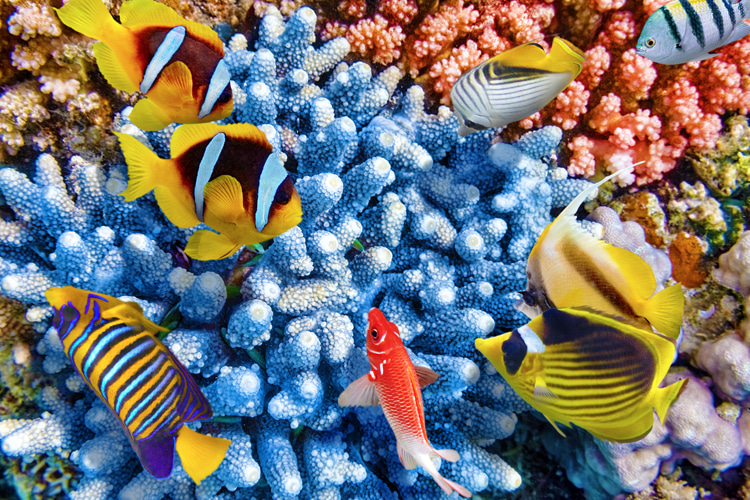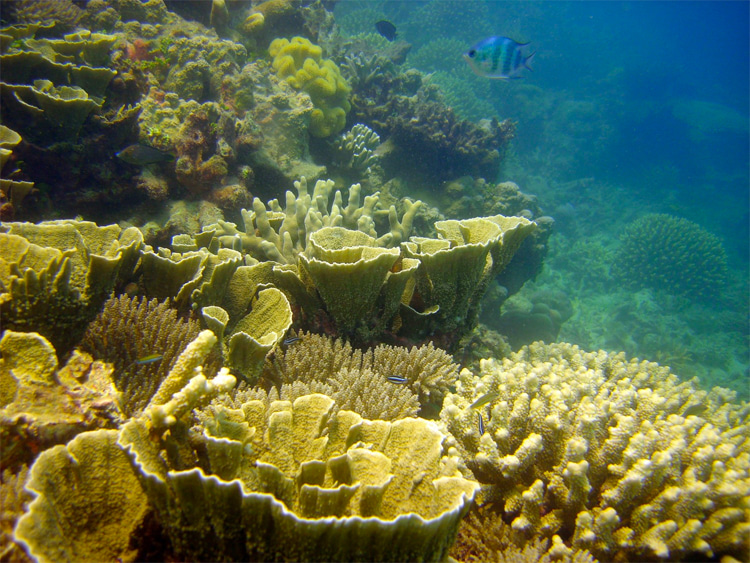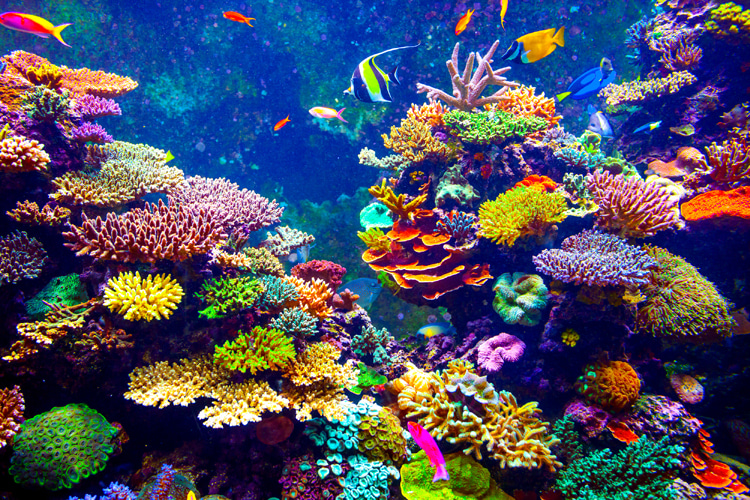Beneath the sun-drenched surface of the world's oceans, amidst the vibrant kaleidoscope of marine life, lies a hidden kingdom - the coral reef.
Coral reefs, often hailed as the rainforests of the sea, are some of our planet's most biodiverse and complex ecosystems.
These underwater cities, teeming with life, are the architects of the underwater world, shaping the very structure of the ocean floor.
But how do these majestic structures, teeming with life, come into existence?
And what are the meteorological processes that play a crucial role in their formation?

Ideal Conditions for Coral Reef Formation
The initial stage of coral reef development is marked by the attachment of mobile coral larvae to hard structures like rocks submerged beneath the ocean's surface, particularly those near the coastlines of islands or continents.
Over time, these larvae grow into coral polyps, which secrete calcium carbonate to form a hard, protective exoskeleton, gradually building a hard structure.
As individual skeletons intertwine, a resilient framework forms a foundation for new polyps to settle and grow.
For coral reefs to thrive, a delicate balance of conditions must be met.
Clear, warm, and sunlit waters are essential for coral polyps to flourish.
These conditions allow for the growth of symbiotic algae, tiny organisms that live within the coral polyps, providing them with nutrients and helping them produce calcium carbonate for their skeletons.
Reefs typically develop in three main forms:
- Fringing Reefs: The most common type, growing near the coastline of islands and continents, forming a protective barrier;
- Barrier Reefs: They form parallel to coastlines but at a greater distance, often separated by a lagoon;
- Atolls: Ring-shaped reefs that develop around sunken volcanic islands, characterized by a central lagoon;
Water temperature plays a critical role in coral reef formation.
Coral reefs thrive in shallow, warm tropical waters, with temperatures generally ranging between 68-84 °F (20-29 °C), between 30° north and south latitudes.
The presence of clean, clear water with the right amount of nutrients is crucial for their health.
As coral thickets build upward on the skeletal remains of older colonies at a pace between 0.8 and 80 millimeters per year, a reef is established.
The Role of Algae
Most hard corals form a symbiotic relationship with algae known as zooxanthellae.
These algae provide the corals with additional food through photosynthesis, while the coral provides a protected environment and compounds necessary for photosynthesis.
The relationship is vital for the health of the reef, contributing to the vibrant colors often associated with healthy coral.
The world's largest coral reef structure is Australia's Great Barrier Reef, which is located off the coast of Queensland.
The Role of Fog
While clear, warm waters are essential for coral reef formation, the intricate interplay of meteorological processes also plays a vital role.
One such process is the formation of fog, a common phenomenon in tropical coastal areas.
When fog droplets fall onto the surface of the reef, they carry nutrients from the atmosphere, including dissolved organic matter and minerals.
These nutrients are essential for the growth and health of coral polyps and the algae that symbiotically live within them.
Studies have shown that reefs located in areas with frequent fog formation tend to be more resilient to disturbances such as coral bleaching.
The nutrients provided by fog help corals recover more quickly from stress and promote the overall health of the reef ecosystem.

Bleaching: The Major Threat
Unfortunately, coral reefs are facing numerous threats.
When the temperature of ocean water exceeds 86 °F (30 °C), corals respond by expelling the algae they live in symbiosis with.
The consequence is a whitening effect known as coral bleaching, a phenomenon where corals under stress release their algae partners, resulting in a loss of color and turning them white.
As a consequence of bleaching, corals become more susceptible to diseases and mortality, which in turn can disrupt the intricate ecological equilibrium of the reef system.
This can occur due to environmental stressors like increased water temperatures and pollution.
Additionally, ocean acidification, primarily caused by rising CO2 levels, makes it more difficult for corals to build their exoskeletons, posing a significant threat to reef health.
Conservationists emphasize the importance of protecting coral reefs due to their ecological significance and the benefits they provide to marine life and human communities.
Efforts include promoting sustainable fishing practices, reducing pollution, and establishing marine protected areas to foster reef resilience.
